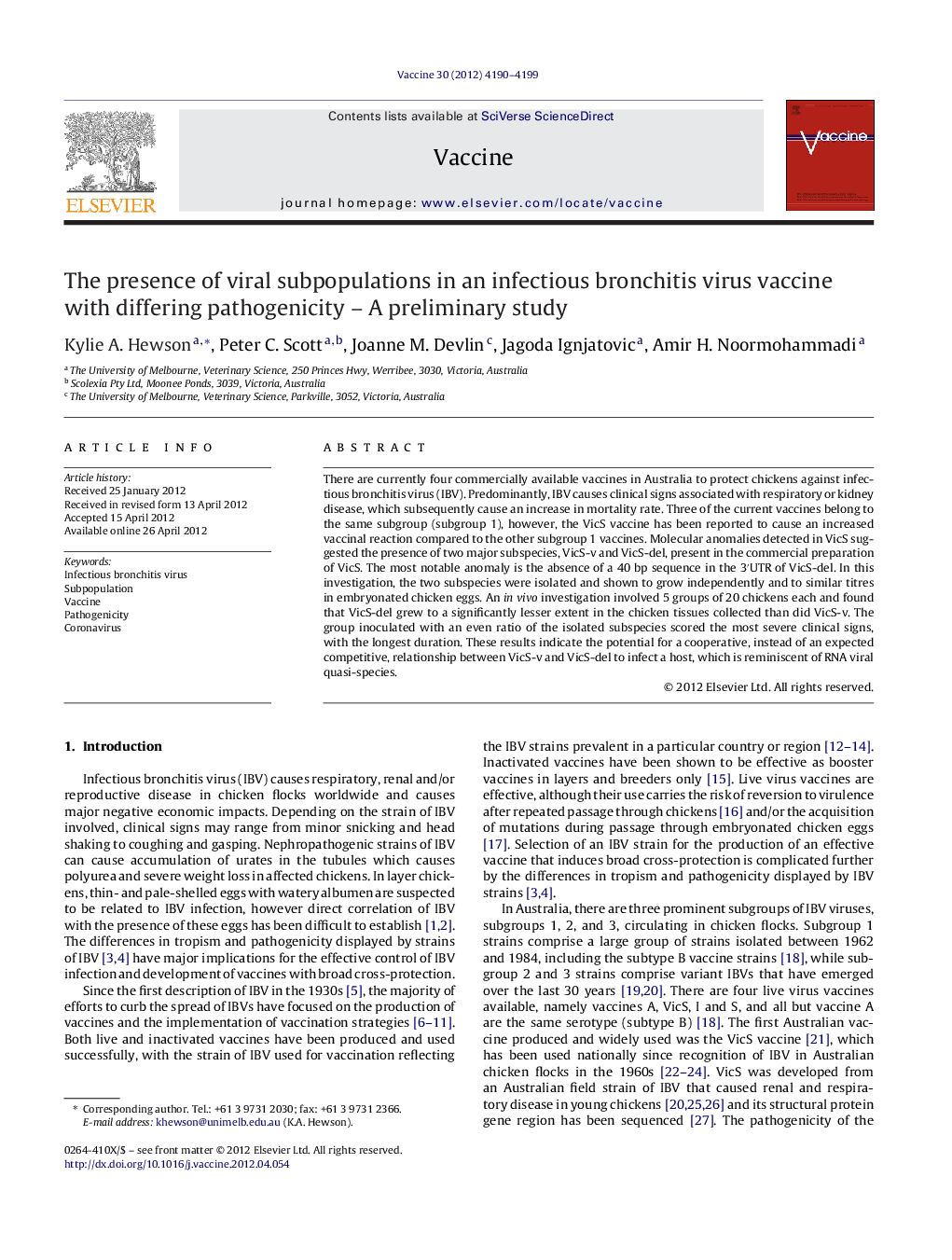| Article ID | Journal | Published Year | Pages | File Type |
|---|---|---|---|---|
| 2402941 | Vaccine | 2012 | 10 Pages |
There are currently four commercially available vaccines in Australia to protect chickens against infectious bronchitis virus (IBV). Predominantly, IBV causes clinical signs associated with respiratory or kidney disease, which subsequently cause an increase in mortality rate. Three of the current vaccines belong to the same subgroup (subgroup 1), however, the VicS vaccine has been reported to cause an increased vaccinal reaction compared to the other subgroup 1 vaccines. Molecular anomalies detected in VicS suggested the presence of two major subspecies, VicS-v and VicS-del, present in the commercial preparation of VicS. The most notable anomaly is the absence of a 40 bp sequence in the 3′UTR of VicS-del. In this investigation, the two subspecies were isolated and shown to grow independently and to similar titres in embryonated chicken eggs. An in vivo investigation involved 5 groups of 20 chickens each and found that VicS-del grew to a significantly lesser extent in the chicken tissues collected than did VicS-v. The group inoculated with an even ratio of the isolated subspecies scored the most severe clinical signs, with the longest duration. These results indicate the potential for a cooperative, instead of an expected competitive, relationship between VicS-v and VicS-del to infect a host, which is reminiscent of RNA viral quasi-species.
► We isolated two subpopulations of infectious bronchitis virus (IBV) from a commercial vaccine. ► Genome sequence analysis found mutations in multiple genes/open reading frames. ► These subpopulations had the same pathogenicity in embryonated chicken eggs. ► These subpopulations had differing pathogenicities in vivo. ► Results suggest a cooperative relationship when simultaneously inoculated in vivo.
